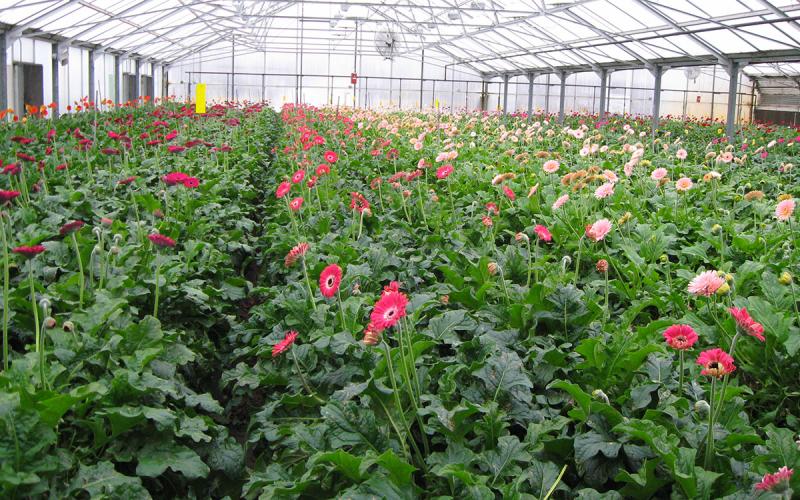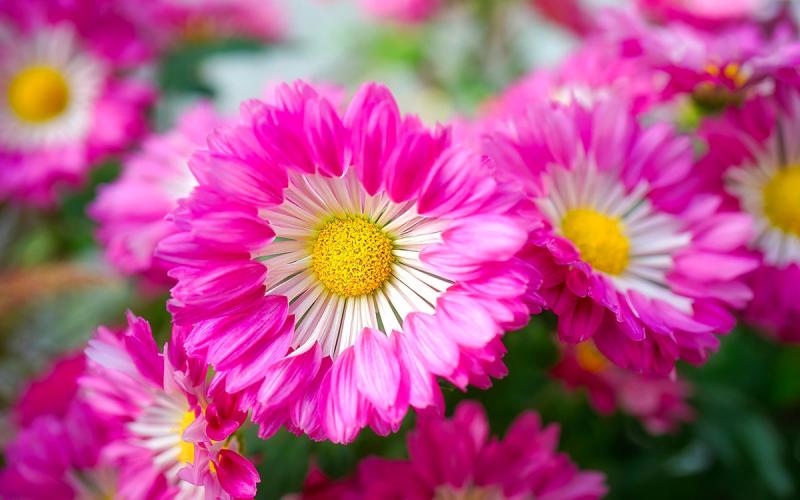Original article by David Graper, former SDSU Extension Horticulture Specialist and Master Gardener Program Coordinator. Updated by Katrina Manley, SDSU Extension Horticulture Assistant; and Kristine Lang, Assistant Professor, Agronomy, Horticulture, and Plant Science. Special thanks to SDSU Extension Master Gardener Trainee, Max Peterson, for editorial review of this article.
Fun Facts

Gerbera Daisies have been a popular flower for decades and have become more common in recent years. According to Amy Stewart in the book “Flower Confidential,” Americans buy over 200 million Gerbera stems a year.
Annually, Dutch greenhouses test new varieties of Gerbera jamesonii. The greenhouses are looking for varieties that will ship well and do well as a cut flower.
Gerberas, like other plants with daisy-like flowers, are members of the sunflower family (Asteraceae). Approximately 30 species exist in the wild, extending to South America, Africa, and tropical Asia. Gerbera were first classified in 1737, and were named after German botanist Traugott Gerber, who traveled extensively in Russia and was a friend of Carl Linnaeus, the “father of modern plant taxonomy”.
The meanings of Gerbera flowers come from those attributed to the general daisy family. These meanings include innocence and purity. Daisies are also a classic symbol of beauty. In addition, Gerberas hold an added meaning of cheerfulness, which stems from the assortment of colors available.
Gerbera flowers have a typical daisy shape but come in a wide range of vibrant colors ranging from white to pink, red, yellow, orange, and burgundy. Bi-color types are also available. Different varieties provide single to double flowers, and some are known as spider flowers, with thinner and more-pointed petals. Gerberas are a great cut flower and are the fifth most popular after roses, carnations, chrysanthemums, and tulips
Tips for Long-Lasting Gerbera Flowers

Use a vase that will allow a large volume of shallow water. The water level should only be three-quarters to one inch deep. Be sure that the vase is not too small, as otherwise the water dries out quickly.
To avoid shortening the life of cut flowers, do not place the vase close to ripening fruits and vegetables. Also, monitor the cut-end of the stem. When it begins to discolor and become soggy, make a fresh cut. The new cuts leave a strong stem that helps the Gerbera flowers to last for several weeks.
References and Resources
- National Garden Bureau Website, National Garden Bureau.
- The Secret to Long-Lasting Gerbera Daisies, WSU Arboretum & Botanical Gardens.
- Flower Confidential, Amy Stewart.


